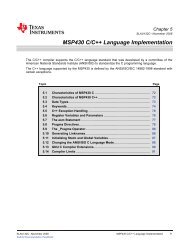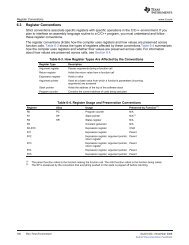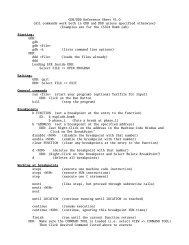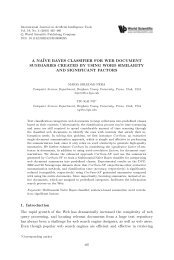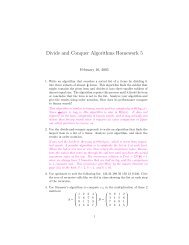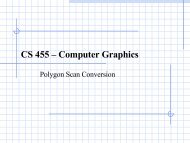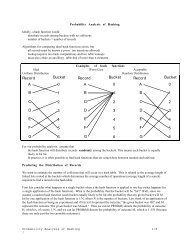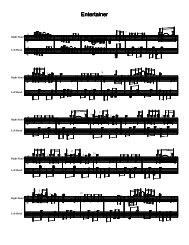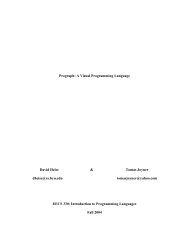Approximate Implicitization Using Monoid Curves and Surfaces
Approximate Implicitization Using Monoid Curves and Surfaces
Approximate Implicitization Using Monoid Curves and Surfaces
You also want an ePaper? Increase the reach of your titles
YUMPU automatically turns print PDFs into web optimized ePapers that Google loves.
The projection of control points P ijk onto the plane z = 0 forms a triangular lattice with the reference triangle's<br />
vertices T 0 , T 1 <strong>and</strong> T 2 corresponding to P 00n , P n00 <strong>and</strong> P 0n0 , respectively. That is,<br />
0 1 0<br />
1<br />
P ijk = @ x ijk<br />
y ijk<br />
A = @ (ix n00 + jx 0n0 + kx 00n )=n<br />
(iy n00 + jy 0n0 + ky 00n )=n A : (5)<br />
z ijk c ijk<br />
Note that the reference triangle bounds the intersection of the triangular surface patch with the plane<br />
z =0. <strong>Using</strong> this formulation, it is possible to represent the algebraic curve segments of interest. However, as<br />
demonstrated in Figures 1 <strong>and</strong> 2, the implicitized parametric curves often have self-intersections <strong>and</strong> undesirable<br />
\phantom" components. Since monoid curves <strong>and</strong> surfaces can easily avoid these problems, our strategy is to<br />
use the monoid representation in lieu of general algebraic curves <strong>and</strong> surfaces.<br />
3.1 Dual representation for monoid curves<br />
An algebraic curve of degree n with a multiple point O of order n , 1was called by Cayley a monoid [24]. If<br />
O is at the original point, the monoid curve equation consists of terms of degree n <strong>and</strong> n , 1 only. The genus<br />
of such a curve is zero, therefore the curve is rational. Also, as any line through O meets the curve in just one<br />
other point, there is a one-to-one correspondence between the points on the curve <strong>and</strong> the pencil of lines with<br />
the axis located at O.<br />
In the Bernstein-Bezier formulation, a monoid curve has a simple representation if we choose one vertex of<br />
the reference triangle to be the multiple point. Let a degree n monoid curve be dened by (3) in the Bernstein-<br />
Bezier form over reference triangle T 0 T 1 T 2 . If we assume T 0 to be the multiple point of the monoid curve, then<br />
c ijk = 0 when k>1 (see Figure 3). Thus the curve equation can be rewritten as<br />
f(s; t; u) =f b (s; t)+uf i (s; t) = X<br />
i+j=n<br />
This is the implicit representation of a monoid curve.<br />
c ij0<br />
n<br />
i<br />
s i t j + un X<br />
i+j=n,1<br />
n<br />
c ij1<br />
,<br />
<br />
1<br />
s i t j : (6)<br />
i<br />
We now derive the parametric representation. Let P (s; t; u) be a point on the monoid curve (see Figure 4).<br />
Line T 0 P will intersect T 1 T 2 at point I, whose coordinates are (s=(1 , u);t=(1 , u); 0). By introducing a new<br />
parameter = t=(1,u), the barycentric coordinates of P can be expressed in terms of <strong>and</strong> u:<br />
s =(1, )(1 , u); t = (1 , u); u = u: (7)<br />
8




